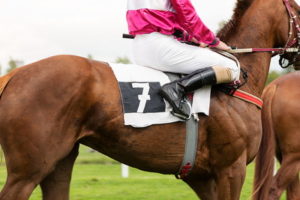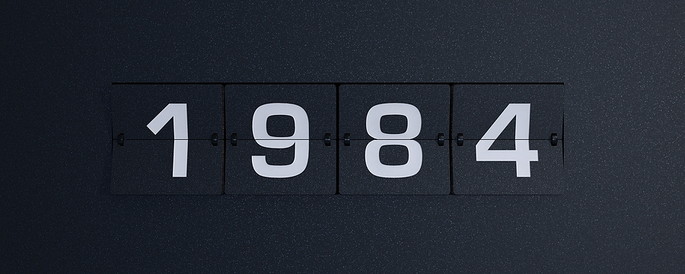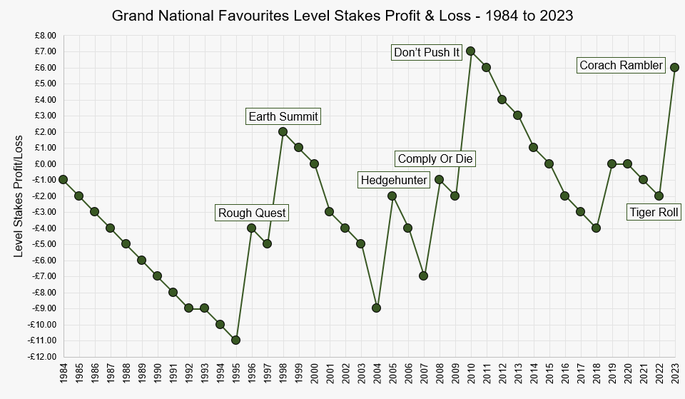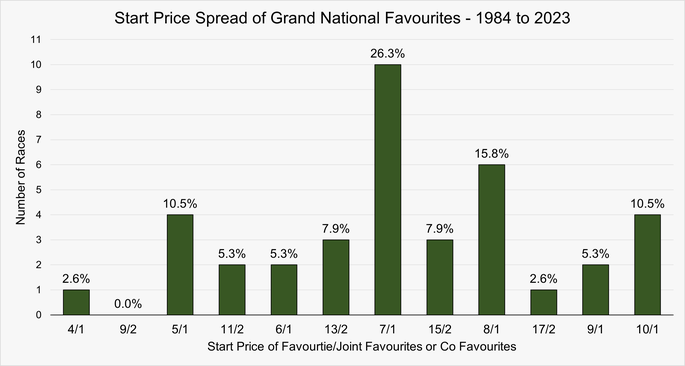 Considered by many to be the World’s Greatest Steeplechase, the Grand National is a thrilling watch for audiences thanks to the incredibly difficult nature of the course. The jumps are famous around the globe, with names like Foinavon, The Chair and Becher’s Brook sending shivers down the spine of even the bravest and most accomplished jockey. It’s exciting because of the constant feeling that any horse can win.
Considered by many to be the World’s Greatest Steeplechase, the Grand National is a thrilling watch for audiences thanks to the incredibly difficult nature of the course. The jumps are famous around the globe, with names like Foinavon, The Chair and Becher’s Brook sending shivers down the spine of even the bravest and most accomplished jockey. It’s exciting because of the constant feeling that any horse can win.
That feeling is further ingrained in the minds of the watching public thanks to the fact that the favourite of the race doesn’t seem to win it all that often. That doesn’t mean that every winner has odds of 100/1, but it’s certainly true that the favourite seems to struggle when it comes to the Grand National more than in other horse races. The question is, then, how often does the favourite actually win Aintree’s biggest race?
How Many Favourites Have Won the Grand National?
Since the maximum field size of 40 runners was introduced in 1984 there have been seven winning favourites in 38 Grand Nationals, roughly once every five and a half years or around 18% of races.
The Modern Day Grand National (1984 – Present)

The first thing to do is to elect a time period to look at when it comes to the Grand National. The race took place for the first time in 1839, according to the official records at any rate, with the 5/1 favourite Lottery winning the inaugural running. In many ways, it was an entirely different race back then and has changed almost beyond all recognition when it comes to thinking of the National in the modern era.
Given we want to think about the more modern version of the race, therefore, we want to come up with a manner of deciding upon when that is, with 1984 seeming like the obvious candidate. That is the year that the size of the field was limited to forty. The favourite is always going to be less likely to win in a large field. Put a 5/1 favourite in a field of 40 runners and it will struggle to live up to its billing more than a 7/1 favourite in a field of 20 is likely to.
The Grand National has long been a race that has countless factors working against the horses, with the difficulty of the fences being high on the list. The more horses there are trying to jump those fences, the more difficult it will be for them to do so. Whilst forty horses isn’t exactly a small number, it is still an amount of participants that has been deemed sensible and safe by the Jockey Club and the Grand National race organisers.
The result of this is that the stats on favourites would be less relevant if we went back further than the field-size restriction introduction. Rather than having to go through and explain the field size for each race, it’s better to look only at the period of time when the number of runners in the race began to be limited for safety reasons. It’s unlikely to be a coincidence, for example, that the winner of the 1929 race, which had the largest field ever at 66, was a 100/1 outsider.
Winning Grand National Favourites
The first thing we’ll do is to have a look at the years that the favourite won the race from 1984 onwards. Is there anything we can learn from factors like the odds, the trainer or the jockey, or even the horse’s age when winning? We’ll look at the time period of 1984 to 2023, during which there were thirty-eight runnings of the race. This is on account of the fact that the 1993 renewal was made void after a false start, and the 2020 race was cancelled.
Grand National Winning Favourites (1984 – 2023)
| Year | Horse | Odds | Age | Jockey | Trainer |
|---|---|---|---|---|---|
| 2023 | Corach Rambler | 8/1 | 9 | Derek Fox | Lucinda Russell |
| 2019 | Tiger Roll | 4/1 | 9 | Davy Russell | Gordon Elliott |
| 2010 | Don’t Push It | 10/1 JF | 10 | Tony McCoy | Jonjo O’Neill |
| 2008 | Comply Or Die | 7/1 JF | 9 | Timmy Murphy | David Pipe |
| 2005 | Hedgehunter | 7/1 | 9 | Ruby Walsh | Willie Mullins |
| 1998 | Earth Summit | 7/1 | 10 | Carl Llewellyn | Nigel Twiston-Davies |
| 1996 | Rough Quest | 7/1 | 10 | Mick Fitzgerald | Terry Casey |
We can see, then, that no favourite under the age of nine has won the Grand National since 1984 and the introduction of the limited field size. It’s also interesting that the favourite’s Starting Price was 7/1 more often than any other. We’ll look at the price of the favourites in Grand National meetings in more detail elsewhere in this piece. For now, here’s a quick look at each of the winning favourites and their story:
Corach Rambler – 2023
Scottish trainer Lucinda Russell already knew what it took to win a Grand National after she was victorious with One For Arthur in 2017. Her entry for the 2023 race, Corach Rambler, had already won one of the season’s top staying handicaps when winning the Ultima Handicap at the Cheltenham Festival for the second year in a row.
As the weights for the National are announced before the Festival, Corach Rambler found himself some 12lbs better off than his new rating of 158 and was a firm 8/1 favourite before the race. Russell turned again to 2017 hero Derek Fox who navigated the 29 fences without trouble, taking the last fence on the bridle a running out an impressive winner.
Tiger Roll – 2019
Tiger Roll’s win in this race in 2018 wasn’t exactly out of nowhere, with Davy Russell leading him home as a 10/1 shot compared to the favourite, Total Recall, and his odds of 7/1. It meant that bookies fancied him to repeat the trick, dropping his odds to 4/1 and believing that he’d be the first horse since Red Rum to win back-to-back Nationals. The fact that, like Red Rum, Tiger Roll had been bred for the flat might have influenced their thinking.
Don’t Push It – 2010
The success of Don’t Push It at the 2010 Grand National was noteworthy largely for the fact that it was Tony McCoy’s first win of the Aintree race, coming at his fifteenth time of asking. Don’t Push It was 20/1 hours before the race, coming in to join Big Fella Thanks as the 10/1 joint-favourite after having been backed heavily as the race approached. He eventually won by five lengths, delighting the largest Aintree Racecourse crowd since 2005.
Comply Or Die – 2008
The favourite in the build-up to 2008’s Grand National was Cloudy Lane, who was being ridden by Jason Maguire and had seen most of the ante-post action. Heavy betting on Comply Or Die in the lead up to the off saw the Timmy Murphy ridden horse join it as joint favourite. The betting made complete sense when the nine-year-old romped home in first place, whilst Cloudy Lane didn’t even finish in the places.
Hedgehunter – 2005
The one hundred and fifty-eighth Grand National saw all forty berths taken up for the race, which was postponed by twenty-five minutes in order to allow people to watch the marriage of Prince Charles and Camilla Parker Bowles first. All horses returned safely, with Hedgehunter leading the way as favourite. The Irish horse was ridden by Ruby Walsh and trained by Willie Mullins, having fallen at the last fence in a good position the previous year.
Earth Summit – 1998
It took just under eleven minutes for Earth Summit to complete the Grand National course, which was, coincidentally, also the number of lengths that he won by. Trained by Nigel Twiston-Davies, Earth Summit was part-owned by Nigel Payne, who was the press officer for Aintree Racecourse. Thirty-seven runners began the race, with just six making it home without any sort of mishap. Earth Summit had won the Welsh Grand National in December.
Rough Quest – 1996
The first favourite to win the race after the rules on field size were introduced, Rough Quest won the one hundred and forty-ninth renewal of the World’s Greatest Steeplechase in just over nine minutes. Right quest earned his right to be labelled the favourite in the race on account of the fact that he’d won the Racing Post Chase at Kempton and then finished second in the Cheltenham Gold Cup. He eventually won by one and a quarter lengths.
The Full List of Favourites Since 1984
When you think about something like favourites in a race, it’s easy to find yourself wondering how the odds have fluctuated over the years. When it comes to normal races, it’s not unusual to see the favourites priced competitively, but the Grand National is anything but a normal race. Long odds for favourites aren’t unusual, but have they come in a wee bit over the years? Here we’ll have a look at the price of the favourite for each race since 1984, along with how they fared in the race.
Performance of Grand National Favourites (1984 – 2023)
| Year | Horse | Odds | Position | Weight (st-lbs) |
|---|---|---|---|---|
| 1984 | Greasepaint | 9/1 | 2nd | 11-2 |
| 1985 | Greasepaint | 13/2 JF | 4th | 10-13 |
| West Tip | 13/2 JF | Fell | 10-1 | |
| 1986 | Mr Snugfit | 13/2 | 4th | 10-7 |
| 1987 | West Tip | 5/1 | 4th | 11-7 |
| 1988 | Sacred Path | 17/2 | Fell | 10-0 |
| 1989 | Dixton House | 7/1 | Fell | 10-3 |
| 1990 | Brown Windsor | 7/1 | 4th | 10-10 |
| 1991 | Bonanza Boy | 13/2 | 5th | 11-7 |
| 1992 | Docklands Express | 15/2 | 4th | 11-2 |
| 1993 | Void Race | – | – | – |
| 1994 | Moorcroft Boy | 5/1 | 3rd | 10-0 |
| 1995 | Master Oats | 5/1 | 7th | 11-10 |
| 1996 | Rough Quest | 7/1 | 1st | 10-7 |
| 1997 | Go Ballistic | 7/1 | Pulled Up | 10-3 |
| 1998 | Earth Summit | 7/1 | 1st | 10-5 |
| 1999 | Fiddling The Facts | 6/1 | Fell | 10-3 |
| 2000 | Dark Stranger | 9/1 | Unseated Rider | 10-1 |
| 2001 | Edmond | 10/1 CF | Fell | 10-1 |
| Moral Support | 10/1 CF | Brought Down | 10-9 | |
| Inis Cara | 10/1 CF | Fell | 10-3 | |
| 2002 | Blowing Wind | 8/1 | 3rd | 10-6 |
| 2003 | Shotgun Willy | 7/1 | Pulled Up | 11-9 |
| 2004 | Clan Royal | 10/1 CF | 2nd | 10-5 |
| Joss Naylor | 10/1 CF | Pulled Up | 10-11 | |
| Bindaree | 10/1 CF | Unseated Rider | 11-4 | |
| Jurancon II | 10/1 CF | Fell | 10-7 | |
| 2005 | Hedgehunter | 7/1 | 1st | 11-1 |
| 2006 | Hedgehunter | 5/1 JF | 2nd | 11-12 |
| Clan Royal | 5/1 JF | 3rd | 10-10 | |
| 2007 | Joe’s Edge | 8/1 CF | Pulled Up | 10-2 |
| Monkerhostin | 8/1 CF | Refused | 11-6 | |
| Point Barrow | 8/1 CF | Fell | 10-12 | |
| 2008 | Comply Or Die | 7/1 JF | 1st | 10-9 |
| Cloudy Lane | 7/1 JF | 6th | 10-11 | |
| 2009 | Butler’s Cabin | 7/1 | 7th | 10-13 |
| 2010 | Don’t Push It | 10/1 JF | 1st | 11-5 |
| Big Fella Thanks | 10/1 JF | 4th | 10-12 | |
| 2011 | The Midnight Club | 15/2 | 6th | 10-13 |
| 2012 | Seabass | 8/1 JF | 3rd | 10-12 |
| Shakalakaboomboom | 8/1 JF | 9th | 10-12 | |
| 2013 | Seabass | 11/2 | 13th | 11-6 |
| 2014 | Double Seven | 10/1 JF | 3rd | 10-11 |
| Teaforthree | 10/1 JF | Unseated Rider | 10-12 | |
| 2015 | Shutthefrontdoor | 6/1 | 5th | 11-2 |
| 2016 | The Last Samuri | 8/1 JF | 2nd | 10-8 |
| Many Clouds | 8/1 JF | 16th | 11-10 | |
| 2017 | Blaklion | 8/1 | 4th | 11-1 |
| 2018 | Total Recall | 7/1 | Pulled Up | 11-5 |
| 2019 | Tiger Roll | 4/1 | 1st | 11-5 |
| 2020 | Cancelled | – | – | – |
| 2021 | Cloth Cap | 11/2 | Pulled Up | 10-5 |
| 2022 | Any Second Now | 15/2 | 2nd | 11-8 |
| 2023 | Corach Rambler | 8/1 | 1st | 10-5 |
Had you bet £1 on the Grand National favourite every year since 1984, where would you be by the time the 2023 race was complete? This we look at in the following chart:

You can see from the graph above that despite the fact that the Grand National is a hugely unpredictable race, the nature of the odds for the horses means that if you’d have bet £1 on the favourite every single year between 1984 and 2023 then you’d have finished your betting with a net win of £6. That’s presuming that you get your stake back with your winnings and that you bet £1 on all horses in the event that there were joint or co favourites for the race.
As for the nature of the odds that are installed on the favourite to win the Grand National each year, it’s probably fair to say that they’ve stayed roughly the same. The specific odds move up and down depending on the nature of the horse that was made the favourite for the race, with the best example being that of Tiger Roll. Having won it as a 10/1 shot in 2018, he was made 4/1 favourite in 2019 and rewarded those that had faith in him.
What is the Spread in the SP of the Favourites?
Looking at the prices of the favourites since 1984, it’s clear that you’re looking at around the 7/1 mark when it comes to a favourite going on to win the race. The question is, how does to the spread look?

The shortest price for a favourite during the period in question is the 4/1 odds given to Tiger Roll the year after his win of the race for the first time. Similarly, Hedgehunter’s price came down the year after he won it, being 5/1 joint favourite with Clan Royal.
Odds of 5/1 were also given to Master Oats in 1995, Moorcroft Boy the year before and West Tip in 1987, though none of the horses actually won at that price. No favourite has been priced longer than 10/1 during the range of dates that we’re looking at, though a number have been given exactly those odds. They were:
- Double Seven and Teaforthree in 2014
- Don’t Push It and Big Fella Thanks in 2010
- Cian Royal, Jurancon II, Bindaree and Joss Naylor in 2004
- Edmond and Moral Support in 2001
From that list, only Don’t Push It in 2010 actually went on to win the race. That perhaps isn’t all that surprising when you consider that 10/1 are long enough odds to mean that the bookmakers don’t really fancy the horse to be all that competitive. That is also reflected in the fact that all of the horses given those odds were joint favourites.
